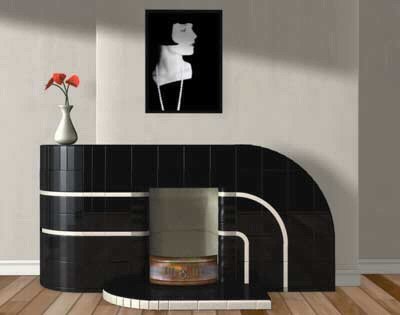

|
|
|
|
|
|
|
|
|
|
|
|
- Asbestos - a deadly plague (The Observer)
A deadly plague in all our
houses? Right now, there is every probability that you are sitting just a few feet away from a substance that can make the risks from cigarette smoking seem trivial by comparison. In fact, if your lungs had to choose, nicotine-laden tobacco smoke would be infinitely preferable to deathly cancer-causing asbestos fibres.
The chances are, your workplace incorporates the substance in some form and, if your home was built between the 1920s and the 1980s, you may well have been coming home oblivious to the presence of the 'lurking menace' for years. It seems many of us were raised unwittingly surrounded by the stuff.
Asbestos is the
largest occupational health killer in the last 50 years. Since 1968, 50,000
people have died after painful and prolonged illness from asbestos-related
diseases such as mesothelioma. A quarter of these worked in the building trade.
If you thought BSE sounded gruesome, get this: inhalation of any form of
asbestos can lead to virtually untreatable disease, but you wouldn't notice it
for years - it can take up to 40 years to develop and it is reckoned that by
2020, 10,000 people a year could be dying from fibres already in their bodies.
Asbestos-ridden council estates and potentially toxic public premises have
long been the subject of screaming headlines in local papers. Now the latest
Control of Asbestos At Work regulations provide that from 21 May 2004 all
non-domestic premises, including your place of work, must have an asbestos audit
to verify just how safe (or unsafe) the work environment is. It is estimated
that 1.5 million commercial buildings contain the substance, so until an audit
has been done, property owners must presume asbestos is present.
But what of Britain's 21 million residential dwellings? What isn't often
appreciated is the extent to which asbestos-based materials exist in our homes.
Amazingly, the use of asbestos in buildings was not totally prohibited until
November 1999, so pretty much any building can be at risk.
The bad news is that homes are excluded from the legislation, with the
exception of communal areas in blocks of flats. However, you can be pretty sure
that when you bought your house the chartered surveyor who inspected it would
have been alert to the risk of potentially hazardous asbestos- containing
materials (ACMs). But if you were one of the eight out of 10 buyers who choose
not to have a private survey and instead rely on a second-hand copy of the
mortgage valuation, you may be none the wiser.
Asbestos was a 'wonder material' of the pre and post-war construction booms,
part of a holy architectural alliance with reinforced concrete and flat roofs
that was deemed to be the face of the future. A material that was light, strong,
massively fire-resistant and relatively cheap seemed a good bet. Probably the most common form you will come across in a typical house is the
less harmful 'asbestos cement' compound, which you will often find as corrugated
roofs to garages and sheds, or as flues and insulation in boiler cupboards. It
is quite common in post-war semis on gutters, downpipes and soffits. You even
come across it in some artificial slates and roof tiles.
You can normally spot asbestos soffits (under the eaves) by their predictably
flaking paintwork or their naked grim grey colour; paint peels off reliably no
matter how much sugar soap or 'No More Nails' you apply prior to decorating.
Asbestos flues are typically hidden away, but are often found serving old
floor-mounted kitchen boilers or back boilers in living rooms. Perhaps the most
insidious form of domestic ACMs lie within many 'Artexed' ceilings in houses of
all ages.
The difficulty faced by your surveyor is, on the one hand to create awareness
that your lovely new home may incorporate the stuff, but on the other hand not
to have you run screaming from the estate agents in a state of demented panic.
There is much arcane debate in the profession about the relative horrors of
white, brown, blue varieties - which is a bit academic as they can be extremely
difficult to tell apart outside a lab. Blue and brown were banned in 1985 and
the arguably less toxic white (chrysotile) wasn't banned until the 1990s.
So what should you do about it? Briefly, don't panic. Asbestos-cement
material in the home need not be an issue. The consensus is that asbestos
materials in good condition and not releasing fibres which are unlikely to be
disturbed should be left in peace. Materials which are damaged or deteriorating
can often be safely sealed.
So in most houses the advice is to leave well alone and for heaven's sake
don't drill it, grind it, sand it or breathe it in. But be warned, there are
some real nasties still out there - the serious ones that I have personally come
across include fluffy white asbestos pipe insulation (in the loft), and huge
ceiling panels with taped joints (often in pre and post- war flats). These can
drastically reduce the value of a property due to the potentially huge expense
of a licensed contractor having to remove them. Employing men in space suits
does not come cheap.
The irony of the legislation introduced this week is that very few employees
get their power tools out at work; you are far more likely to accidentally cut
into hidden ACMs in the house and breathe in the dust than you are sitting in
your office. Yet the legislation, while good news for maintenance workers, does
little to safeguard those of us engaging in the great British passion for DIY.
My advice? Be vigilant, and if in doubt ask a qualified chartered surveyor
for advice. Oh, and take a break with the Black & Decker, guys.
|
Find the right...
|
|
|
|
|
home useful links Copyright Zennor Consultants Limited All rights reserved |